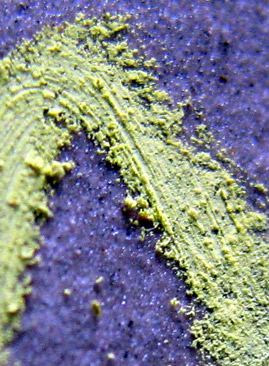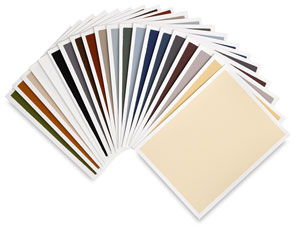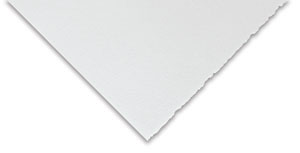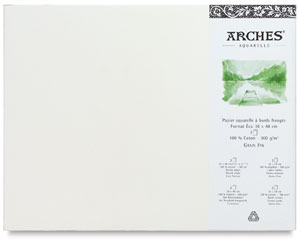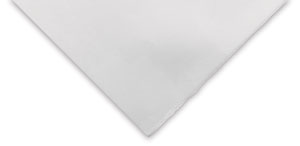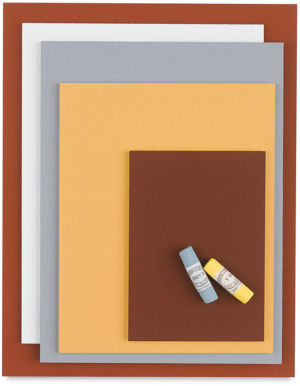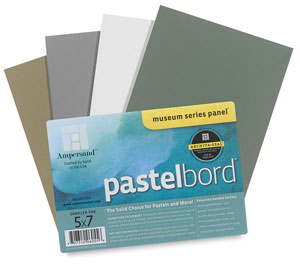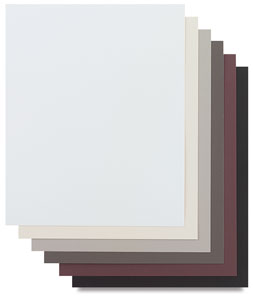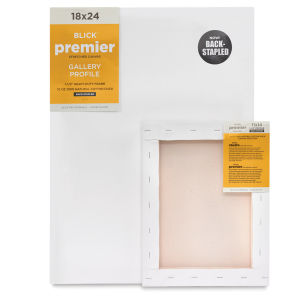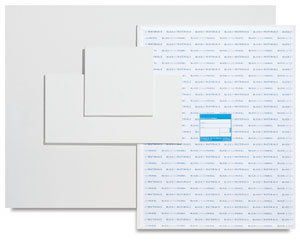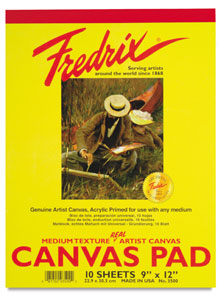Surfaces for Pastels
Surfaces for pastels can mean a whole range of materials because pastels are incredibly versatile. They can be used on almost any surface as long as there is enough tooth for the pastels to grip. Textured paper is the most popular surface for pastels, but you can also use boards, canvas, and even sandpaper. Let's take a look at some things you need to consider and then check out some products. We're going to cover: Tooth and Texture, Paper (Pastel Paper and Watercolor Paper), Pastel Board, and Canvas.
The single most important consideration when selecting surfaces for pastels is tooth and texture. Tooth refers to the tiny bumps and valleys that you can feel and see on rough surfaces. Smooth paper, for example, has little to no tooth. This is vital because unlike other media, which will bind to the surface, pastel particles need tooth and texture to grip or they will slide right off. Tooth is also needed to shave the pigment from the pastel sticks. Without it, you'll find it hard to apply a lot of color.
Super macro shot of pastel on textured paper.
Paper is generally the best support for pastels, but as long as a surface has sufficient tooth and can survive some rubbing and blending, you can give it a try. Once these requirements are met you can have quite a bit of fun experimenting with unusual supports, thereby creating unique and distinctive effects.
The degree of tooth can also affect certain types of techniques, such as layering, detail work, and blending:
Layering
The amount of tooth determines how many layers of pastel can be applied. If the tooth is shallow, it may be filled by a single layer of pastel and when you try to add another layer on top, there won't be any tooth left for it to grip.
Level of Detail
When deciding on the degree of tooth or texture you want for your surface, you should also think about how detailed or textured your finished artwork will be. If you plan on doing precise details with hard lines and edges, you should consider a surface with less tooth. If you'll be applying a lot of color or think it will look cool to have texture showing through, you can opt for a rough surface.
Tooth and Blending
If you know you're going to be blending colors on the support, you should avoid very rough textures because they will inhibit blending.
Balance
When it comes to finding the right texture or degree of tooth for your style, it's often a case of finding the right balance: enough tooth for the pastels to grip but not so rough that you find you're restricted. As you gain experience you'll find supports that fit your needs.
Add Your Own Texture
There are ways to add texture to paper (or any support) by priming it with gesso mixed with sand, or using something like Golden Pastel Ground (Amazon affiliate link). This is useful for artists who like to create their own personal textures. If you're a beginner, don't worry about this. There are plenty of textured products available commerically.
Having discussed some of the attributes you should consider when buying surfaces for pastels, let's take a look at some of the products that are available.
Paper is the most popular surface for pastels because it's relatively cheap and it gives you so many options. You can buy paper in different thicknesses, weights, colors, textures, and forms (sheets, pads, rolls). It's easy to cut and is very light, which makes for easy transport. You can also choose between archival paper that will allow you to create permanent artworks, or dirt-cheap varieties that are great for practice.
The texture of the paper is important, but it must also be tough enough to withstand the rubbing, blending and erasing techniques that are used frequently with pastels. For this reason, very absorbent paper and fragile papers (like silk papers) are not suitable. The strongest papers are made from 100% cotton (also called rag paper), which is acid-free and has been treated to prevent it from yellowing over time.
Color and Tone
It's common for pastel artists to use colored or toned paper, especially when using a limited range of pastel colors.
The color of paper is frequently used by pastel artists to create a number of subtle effects. You can select paper that harmonizes with your pastel colors and has the effect of unifying the artwork. Or you can purposely contrast the paper color with the pastels to create interesting atmospheric moods.
The tone of the paper refers to the lightness or darkness of any particular color. Light-toned paper will typically enhance and emphasize dark-toned pastels. You can also create dramatic effects by contrasting light pastels on dark-toned paper. Mid-toned papers are used most commonly with pastels because they provide a balanced, harmonious background.
Listed below are different types of paper that are compatible with pastels. As long as they possess sufficient tooth and durability, your choice really comes down to personal preference.
Pastel Paper
Pastel paper is textured paper that comes in a wide range of colors and tones. You can buy it in single sheets or in pad form. Some varieties have been sanded or treated to give them added texture.
If you're just starting out with pastels, I'd recommend you start off with an inexpensive pad from a reliable brand, containing assorted colors, like the Starthmore 400 Pastel Pad. Pastel paper can be a very personal choice (depending on your art style), so at some point, after you're more familiar with pastels, you may want to experiment with more premium brands. A good way to do this is to buy single sheets from Blick (links below) or your local art supply store, so that you can play around without spending a fortune!
I've provided links below to the relevant products so that you can easily find them on Amazon and Blick Art Materials. If you make a purchase, I may get a small commission (at no extra cost to you), which helps support this site. Thanks!
Watercolor Paper
Watercolor paper is also a suitable surface for pastels because it's strong and can be purchased in a range of textures. I'd recommend you buy artists' grade paper because it will be the most durable and is available in more textures. Depending on the techniques you'll be using, you should use cold-pressed (medium) or rough paper, and avoid the hot-pressed (smooth) varieties. If you're stuck with smooth paper, you can always treat it with Golden Pastel Ground to give it the "tooth" you need.
For more information check out my Watercolor Paper page.
The Recommended Products below are there to help you browse for art supplies, and if you make a purchase I get a small commission that supports this site and keeps it FREE! Thanks in advance.
Pastel Board
Pastel boards are made by mounting pastel paper or watercolor paper to a hard board, usually masonite. They are often sprayed or treated with fine particles of cloth or grit to enhance their tooth and texture. Pastel boards are more expensive than paper, but worth considering if you like using rough techniques that might damage paper.
Another option is to try an Ampersand Pastelbord, which has a clay surface that has been treated with fine marble dust granules for added texture. I did the cat painting below on an Ampersand Pastelbord and found it to be a pleasing surface to work on.
My pastel painting of a cat on an Ampersand Pastelbord.
If you make a purchase via the links below I receive a small commission, which helps support this site.
Canvas
Canvas has the required texture to hold pastels so it's a worthy surface, especially if you want to paint a large artwork. You can buy pre-stretched canvas, canvas boards, rolls, and pads. These products are much more expensive than paper, especially if you choose top quality linen.
Be wary when buying pre-primed canvas because the tooth of the weave may be reduced by the gesso, resulting in a smooth surface not particularly suited to pastels. You can avoid this buy purchasing unprimed canvas or by priming the canvas again with Golden Pastel Ground which will provide tooth for the pastel particles to grip.
You can check out more art supplies for pastels and other media via the guide to buying art supplies.

